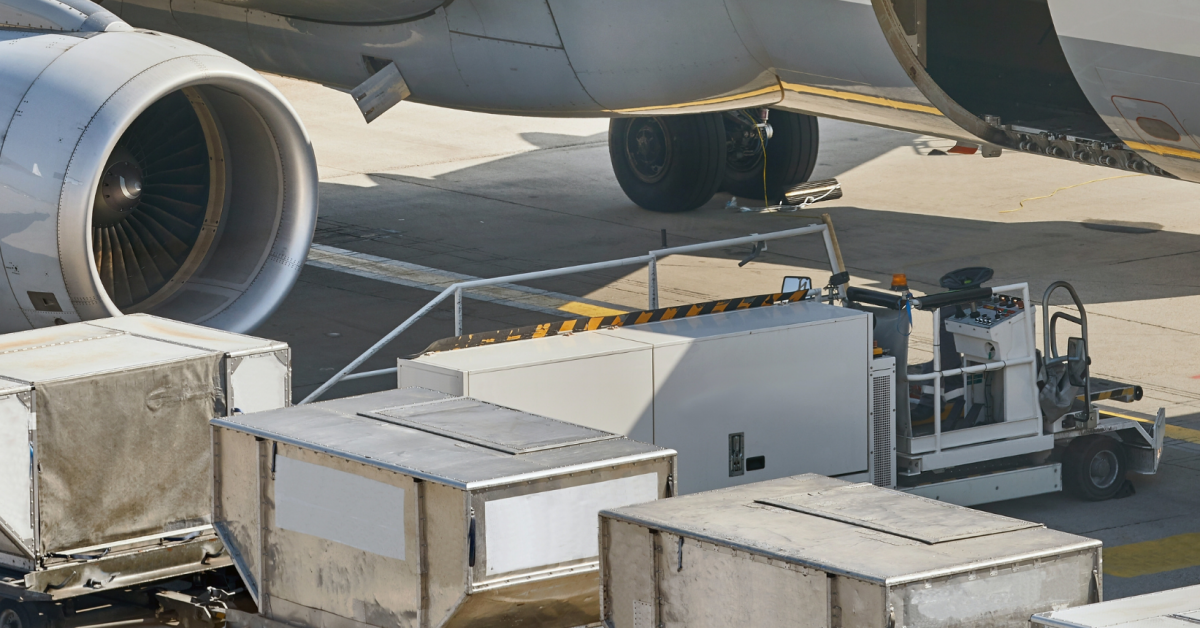AUGUST 9, 2021
The Importance of Air Freight Container Choice to On-Time Distribution of Temperature Controlled Pharmaceuticals

The airline industry never has a dull moment. Due to the plummet of passengers flying during the COVID pandemic, airlines quickly adapted to increasing cargo shipments to ‘fill seats’. At the same time, pharmaceutical manufacturers have come under heavy pressure to tighten temperature control logistics, with air freight being a key focus to ensure on-time distribution of vaccines and medicines.
Lessons continue to emerge on better contingency planning, supply chain redundancies, gaps in training and the list goes on. Bottom line – uncover risks to plan for them and streamline operations where you can, so your supply chain is better prepared for future crisis.
Packaging choice can streamline your air freight logistics.
Let’s look at how choosing one type of packaging for bulk air freight, over another may have downstream effects in your distribution.
The choices
Active: Active containers have electrical cooling and heating systems, which can be plugged in at airport facilities.
Hybrid: Do not use electrical or mechanical cooling, instead uses insulation material that absorbs energy, which allows the system to self-charge in cooling chambers.
Passive: Do not use electrical cooling/heating, instead use special insulated materials and refrigerants that sustain temperatures for long durations.
ULD (Unit Load Device): Most active containers are ULDs, and only one known passive container is classified as ULDs, which allows them to flow through airport channels as ‘aircraft equipment’.
Why is a ULD different?
- ULD’s are classified as aircraft equipment, specifically Aircraft Certified ULDs. This specific certification denotes the container passes required MRO (Maintenance Repair Operation) tests according to an ongoing schedule. Aircraft Certified ULDs must adhere to EASA, FAA and other national governing bodies that ensure the containers are fit to fly on passenger aircraft, maintained for safety and balance of the airplane. As aircraft equipment, a ULD is exempt from customs clearance, saving cost and time.
- Operationally, ULDs are easier to handle. Ground handlers are very familiar with them, helping reduce time-consuming errors. A ULD loads optimally into the airplane, locking into airplane cargo hold. They can also often be loaded onto aircraft at last minute. In addition, there is no single use plastics or netting used, like some other bulk air freight on pallets.
Increase in Passive containers
Over the past several years, passive packaging systems have been on the rise across parcel and bulk shipping of pharmaceuticals. For air freight, passive containers offer alternative advantages over an active system – in particular, passive doesn’t require any electrical or mechanical operation. In busy airports, this can be a good option because it eases operational burden at depots and reduces risk. Passive systems maintain temperature with advanced VIPs and coolants that hold temperature for up to 120 hours.
So how do I choose?
Let’s look at a couple scenarios to explain how the processes can be very different in handling certain air freight containers.
| Situation: Pharma company A has a CRT 15-25C product that needs to ship from Tennessee USA to Bangalore India. Scenario A: An active container is used, ensuring indefinite product protection, as long as there is power supply. Scenario B: A passive container is used, allowing for up to 120 hours of validated performance. Outcome: Both are viable options. However, the routes through London are usually on time and have sufficient cooler space should a passive container need to be stored to trigger hibernation capabilities or simply to protect the ambient temperature exposure to reduce thermal depletion. The product is not high-value 2-8C. Passive could be a more cost-effective choice here. |
Situation: Pharma company B has a 2-8C product that is shipping into an airport with under-developed cold chain infrastructure. Scenario A: An active container is used. Scenario B: Hybrid passive ULD, fitted with PCMs is used. Outcome: Often active containers arrive at shipping site needing yet to be cooled to correct temperature, which takes time. Whereas choosing a hybrid passive ULD that arrives pre-conditioned and ready to load, allows the shipper to ship immediately. Passive is good on certain trade lanes when product is not vulnerable, stability is good. They are good options in situations where airports lack reliable facilities to electrically charge (think outlet plugs) active containers. |
Bottom line, each pharmaceutical shipper should invest the time to understand their products and lanes. It’s only after clear definition of your product stability and lane risk assessment, that you can make a qualified choice for container. Expect to spend about a year to conduct various shipping studies. In the end, it’s worth it by choosing the right container that protects your product and fits the budget.
Why does this matter to the pharmaceutical manufacturer?
BioPharma companies have valuable medicines that need to be shipped by airplane to various global locations. Air transport is a preferred method for tight timelines such as clinical trials, and of course for long distance global shipments when sea freight timelines cannot be afforded. For products with temperature control requirements, the right choice of a cool container will ensure their products reach destination safely, cost effectively and easily with their chosen freight forwarder transportation partner.
Perspective: Freight Forwarder
The transportation company has a lot to juggle in terms of interests. Sometimes packaging can be an afterthought, but to pass along long-term value to pharma partners, they need to recommend suitable packaging systems for the particular product and lane.
For example, passive systems offer advantages that can be passed along to the pharmaceutical company – they are less pricey than active and offer the same reliability in known, high-traffic lanes. Passive systems use state-of-the-art insulation which is more economical than mechanical refrigeration (not to mention all the failure points with electricity).
Perspective: Airlines
Most major airlines shipping cargo have processes in place to handle all sorts of containers with their ground handlers. Still, the less operational steps required to handle a container – the better. So, for example, an Aircraft Certified ULD easily goes through airport processes because they are the most common type of container. From the airline perspective, a ULD makes operations hassle-free which helps ensure on-time flight departures and avoidance of delays. Another aspect, as airlines pursue their sustainability stance, mostly measured in fuel efficiency, lighter containers become more attractive.
“As a fallback we always used active. But with continued cost pressure and availability of alternative containers, we keep learning how/when it makes sense to use passive and hybrid containers.”
Belgian Biotech Company
Today’s ULD
With the technology available today, it’s possible to have ‘eyes’ on air freight shipments globally. This could be especially valuable for high value biopharmaceuticals. Immediate decisions can be made when real-time data is accessible, measuring internal and external temperature, geolocation, pressure, humidity, light, impact and tilt. This data can be collected using the ULD sensor data, or the shipper’s own temperature data loggers within the shipment.
After collecting shipment data in the same lanes over a short period of time, you can start to build insights about those lanes and make proactive cost-saving decisions. Such as, could you switch from an active to a passive system in that lane? Or is there a certain depot or airport that continues to have issues, that lead to further investigation or re-routing? In the end, data is your friend to be able to anticipate problems before they happen.
Corporate Sustainability
Yes, the choice of bulk shipping system can significantly contribute to your company’s CSR goals.
A rental or reusable container or packaging systems is used many times over the years. Compared to single-use packaging, that are up front capital investment to buy, and of course need to be disposed of in a waste stream, often not recyclable and not considered sustainable.
Depending on the ULD, the weight can be lighter from shell materials made out of composite materials. Thus, reducing carbon footprint on every flight.
In your company’s quest for sustainability, it’s an important exercise factoring Total Cost of Ownership of your packaging choice. If you’d like some help, contact Sonoco ThermoSafe.
Summary
There is a lot of consider when choosing the right air freight shipping system, especially for high-value biopharmaceuticals. Foremost, you need to protect your protects, ensure on-time, in-spec delivery. But it needn’t break the bank every time.
Choosing the right packaging system for your product and lane can save time and delays – while saving cost.
To talk through different scenarios that make sense for your valuable shipments, contact Sonoco ThermoSafe.

